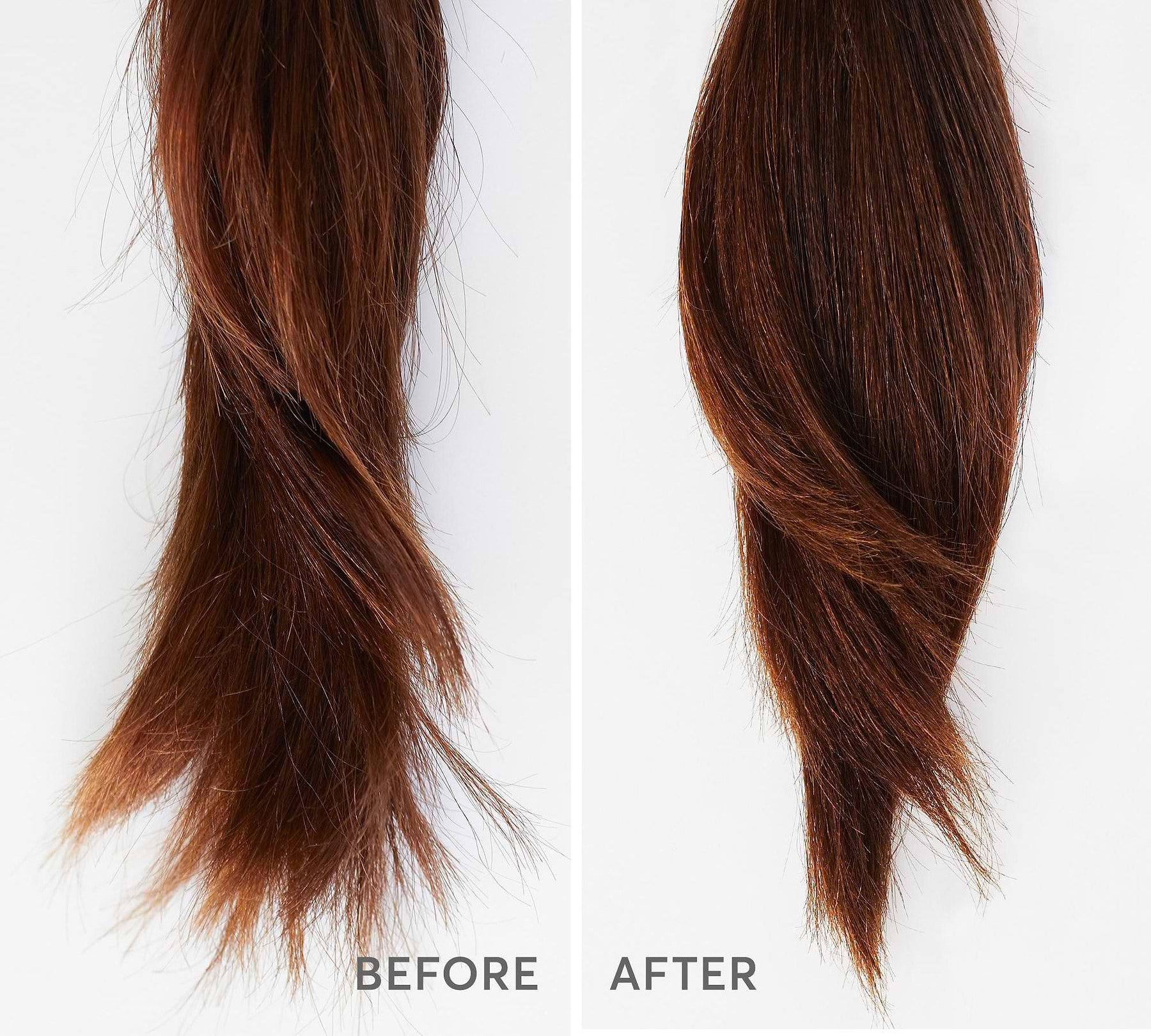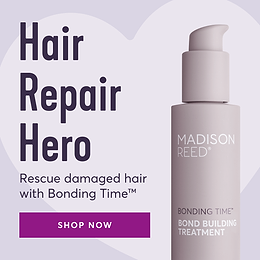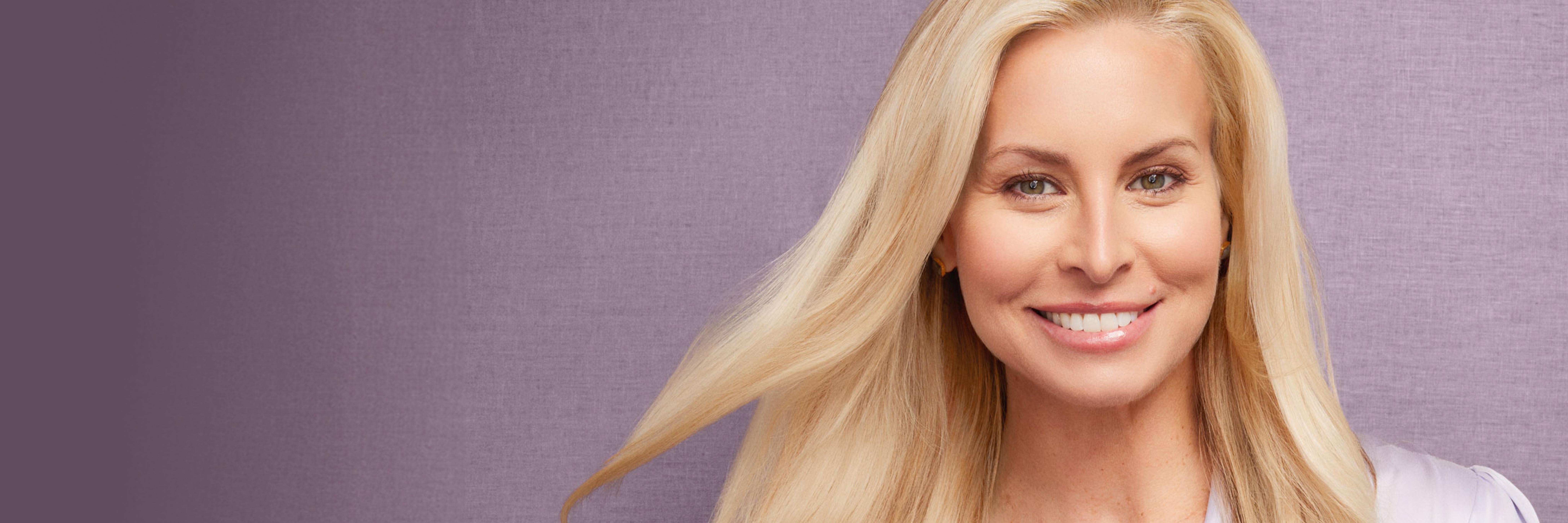Let’s dive into the differences between dry and damaged hair, and discover how to pinpoint and tackle each condition to make your hair look fabulous.
Rachael Thomas | September 24, 2024
How to Tell If My Hair Dry or Damaged?

Image by Madison Reed
Is My Hair Dry or Damaged? That Is the Question
How to know if your hair is dry or damaged? Dry hair lacks moisture and natural oils, resulting in a rough texture that feels brittle and prone to tangling. It often looks dull and lacks shine, worsened by factors like excessive washing with harsh shampoos or exposure to environmental elements such as sun and dry air.
On the flip side, damaged hair is the result of physical or chemical processes that weaken its structure. This includes chemical damage from treatments like coloring, bleaching, or perming, or mechanical damage from heat styling, harsh brushing, or tight hairstyles. Signs of damaged hair include split ends, breakage, frizziness, and reduced elasticity. Damaged hair tends to feel weak and may appear uneven or thin due to breakage along the hair strand.

Signs Your Hair Might Be Affected
You can pinpoint whether your hair is dry or damaged by examining its texture, appearance, manageability, and scalp condition:
Texture and feel - dry hair feels rough and straw-like, even after washing, and may lack smoothness. Damaged hair, however, often feels brittle with areas that feel mushy or overly elastic.
Appearance - if your hair looks dull and tends to frizz in humid conditions, it’s likely dry. Conversely, damaged hair reveals more obvious signs like breakage, split ends, and uneven lengths.
Manageability - dry hair is prone to tangling and requires more effort to style smoothly. Damaged hair, on the other hand, is more likely to break, often looking uneven or fragile.
Find Your Perfect Shade
Take our 2 minute quiz to get your colorist-approved hair color match!
Take the quizHow to Take Care of Dry and Damaged Hair?
Once you've uncovered the true state of your hair, it's time to go on a revitalizing journey.
For dry hair, think of it as a thirsty plant that needs watering. Give it a drink with sulfate-free shampoos and conditioners packed with hydrating superheroes like argan oil. Keep the heat at bay by dialing down the temperature on your styling tools or cutting back on their use altogether. Shield your hair from the sun’s harsh rays with stylish hats or UV-protecting products, giving it a cozy cover from environmental aggressors.
When dealing with damaged hair, treat it like a delicate work of art in need of restoration. Schedule regular trims to snip away split ends and halt further damage from creeping up the hair shaft. Strengthen and rebuild with proteins and bond-building treatments which help to repair the broken bonds within the hair. Steer clear of harsh chemicals like bleach your hair is healthy enough to go blonde - or perms, opting instead for professional help, if needed. Indulge in regular deep-conditioning treatments to rehydrate your hair and pamper it back to health.
Say Goodbye to Dry and Damaged Hair - Tips for Maintaining Healthy and Shiny Hair
If you’re ready to bid farewell to damaged and dry hair once and for all, think of your diet as the secret weapon in your hair care arsenal. Be sure to add vitamins and minerals to your daily menu - particularly biotin, zinc, and vitamins A, C, and E - to nourish your body from the inside out, helping to fuel luscious locks and stronger strands.
In addition to a nutritious diet, be gentle to your hair: use a good-quality detangling paddle brush and steer clear of aggressive towel-drying, which can lead to breakage. Make regular pit stops at your hairstylist’s for trims and expert advice, ensuring your hair remains in top shape and any issues are tackled before they become major concerns. With these steps, you’re well on your way to hair that’s not just surviving, but truly thriving.
What cosmetics for dry or damaged hair should you choose? Focus on products that avoid harsh additives and embrace your hair’s natural texture and scalp health. Seek out formulations free from ammonia, parabens, sulfates, and other potentially harmful chemicals. You can also choose one of these top oils to protect your hair. These choices not only help shield your hair from further damage but also nurture its innate resilience and shine.
Prioritize products crafted with care and dermatologist-tested safety. Look for brands that are dedicated to using high-quality ingredients and uphold rigorous standards, like Madison Reed’s thoughtfully designed formulas that are made with ingredients you can feel good about. By opting for products that honor your hair’s natural state, you’ll set the stage for a hair care routine that enhances both its health and beauty over time.
By embracing a holistic approach to hair care and making thoughtful choices about the products you use, you can nurture strong, vibrant hair that radiates health and vitality. Commit to practices that enhance your hair's natural beauty and resilience, and you'll ensure it stays in peak condition for the long haul.
The takeaway
By understanding the difference between dry and damaged hair and spotting the signs early, you can take proactive steps to rejuvenate your hairand bring out its natural beauty and strength. For dry hair, use products that are designed for hydration and moisture. For damaged hair, use products that aim to strengthen. By customizing your hair care routine to address the specific needs of your hair, you can help nurture your strands back to health and achieve the beautiful look you love.
Want to learn how to dye your hair and keep it looking healthy? Check our blog!Get Free Shipping
Plus exclusive promotions, hair tips and info about events near me when you subscribe!
















